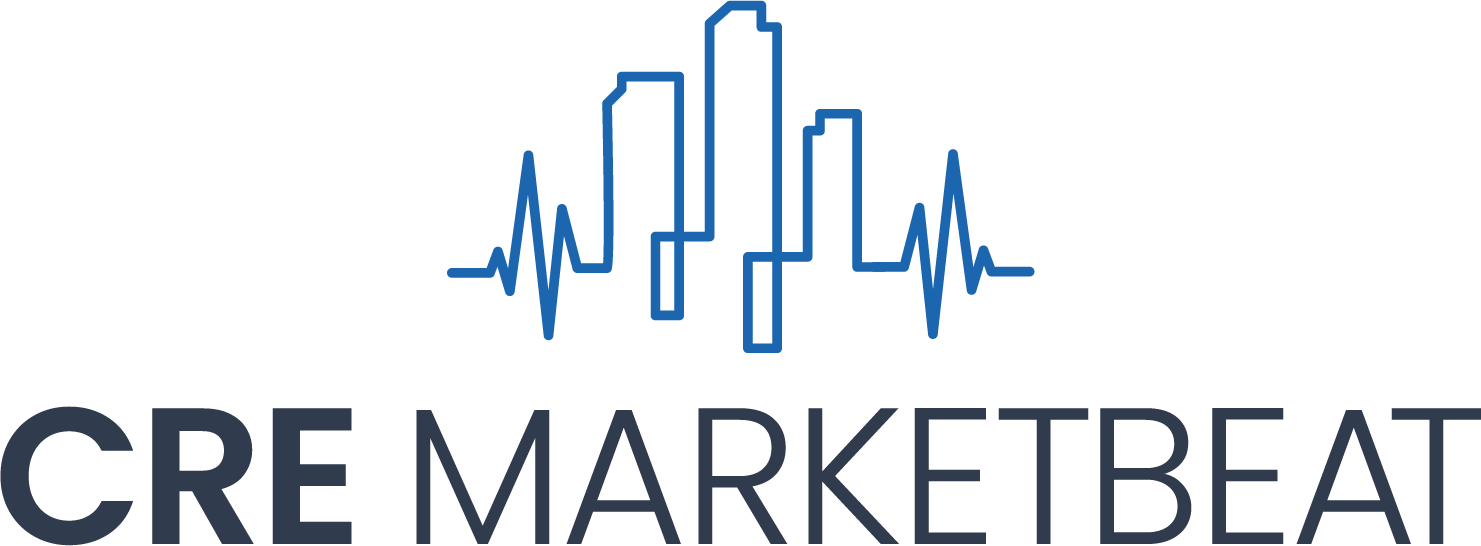Cushman & Wakefield successfully facilitated the sale of 340 Mount Kemble Ave., a prestigious office building spanning 439,059 square feet in Morristown, NJ. The specific sale price was not disclosed.
The sellers, Onyx Equities and PCCP, were represented by a team consisting of David Bernhaut, Gary Gabriel, Andy Merin, Frank DiTommaso and Bill Baunach. The property was acquired by First Mile Capital through their affiliate Crown Acquisitions. Brad Domenico from Cushman & Wakefield’s Equity Debt & Structured Finance group arranged the acquisition financing with assistance from Societe Generale.
According to Bernhaut: “The transaction for 340 Mount Kemble is significant in today’s office market and is likely one of the largest suburban office deals in recent history within the United States.” He also praised Onyx Equities and PCCP for their exceptional work on renovating this former AT&T call center into a modern corporate facility that now boasts an impressive occupancy rate of 94.5%.
Connect CRE reported that First Mile Capital has officially acquired these multi-tenant offices located in Morristown following Cushman & Wakefield’s successful facilitation of the deal.
Flashcard Subject: Chapter One Vocabulary
Q: Biology
A: Study Of Life
Q: Organism
A: Any Living Thing That Can Carry Out Its Life Independently.
Q: Organization
A: A High Degree Of Order Within An Organisms Internal And External Parts And In Its Interactions With The Living World.
QFlashcard Subject: chapter3 – lesson1&2 vocab words (science)
Q: cell theory
A:
All living things are composed cells,
cells are basic units structure function,
new cells produced existing ones.
Biology:
Cell theory states three principles about all living organisms:
1) All living organisms consist at least one or more cells.
2) Cells are the basic unit of structure and function in living things.
3) All cells come from pre-existing cells through cell division.
Cell:
The smallest structural and functional unit of an organism, typically microscopic and consisting of cytoplasm surrounded by a membrane.
Unicellular:
Made up of only one cell.
Multicellular:
Made up of more than one cell.
Tissue:
A group or layer of similarly specialized cells that together perform certain special functions within an organism.
Organismal level
: The highest level at which life is studied, focusing on how all the systems work together to maintain homeostasis within an individual organism.Flashcard Subject: 1
Q: ���定 (yùdìng)
A: to reserve; to book
Q: ����� (hángbān)
A: flight number
Q: 时间 (shíjiān)
A:你的����是��么时��?
B:我预定了明天��上��点的����。
N�� de hángbān shì shénme shíhou?
W�� yùdìngle míngtiān z��oshang ji�� di��n de hángbān.
What time is your flight?
I booked a flight for tomorrow morning at nine o’clock.
Flashcard Subject: Chapter 5 Test Review- History
Q: What was the purpose for creating checks & balances in our government? How does it work?
A:The purpose was so no branch would have too much power over another branch. It works because each branch has specific powers that they can use against other branches if needed .
Example : Judicial Branch can declare laws unconstitutional , Executive Branch can veto laws passed by Congress , Legislative Branch approves appointments made by the President
A:
The purpose of checks and balances is to ensure that no one branch of government becomes too powerful. It works by dividing power among the three branches (legislative, executive, and judicial) and giving each branch specific powers to check or limit the actions of the other branches. For example, if Congress passes a law that is deemed unconstitutional by the Supreme Court, then it can be struck down. If Congress wants to override a presidential veto on a bill they passed with two-thirds majority vote in both houses.
Another example would be how Congress has oversight over executive agencies such as holding hearings or conducting investigations into their actions. The president also has some control over legislative action through his power to veto bills passed by Congress.
Overall, checks and balances help maintain a balance of power between all three branches so that no single branch can become too dominant.
Flashcard Subject: Chapter 6 – Sensation & Perception
Q: sensation
A: process where sensory receptors detect environmental stimuli & transmit them as nerve impulses towards brain for processing; basic building blocks for perception
Q: perception
A: process where brain organizes/interprets sensory information; gives meaning/structure/purpose/contextualization/etc.; makes sense out of sensations received from environment; influenced heavily by past experiences/motivations/emotions/culture/etc.; subjective experience unique per individual but share similarities across people due to shared biology/human nature/socialization/etc.
Q: bottom-up processing (data-driven)
A: starts w/sensory info from environment -> sent up neural pathways towards higher-level cognitive processes used in recognition/recall/judgment/perception/memory/thoughts/actions/reactions/planning/problem-solving/goal-directed behavior/intentionality/consciousness/self-awareness/executive functioning/higher-order thinking skills/metacognition/critical thinking/logical reasoning/scientific method/inferential statistical analysis/general intelligence/g-factor/etc.; sensory info used to build up a perception of the environment; data-driven processing
Q: top-down processing (conceptually driven)
A: starts w/expectations/motivations/emotions/culture/past experiences/beliefs/knowledge/goals/intentions/consciousness/self-awareness/executive functioning/higher-order thinking skills/metacognition/critical thinking/logical reasoning/scientific method/inferential statistical analysis/general intelligence/g-factor/etc. -> sent down neural pathways towards lower-level cognitive processes used in recognition/recall/judgment/perception/memory/thoughts/actions/reactions/planning/problem-solving/goal-directed behavior/intentionality/consciousness/self-awareness/executive functioning/higher-order thinking skills/metacognition/critical thinking/logical reasoning/scientific method/inferential statistical analysis/general intelligence/g-factor/etc.; expectations and prior knowledge influence the interpretation of sensory information; conceptually-driven processing
Q: selective attention
A: process where brain focuses on one aspect of environment while ignoring others; allows us to filter out irrelevant/unimportant stimuli & focus on important ones for survival/successful adaptation/socialization/communication/language acquisition/acquisition of knowledge/skills/expertise/wisdom/truth/facts/theories/laws/principles/hypotheses/models/frameworks/methodologies/tools/approaches/procedures/mechanisms/algorithms/heuristics/systems/processes/functions/structures/components/subcomponents/dimensions/categories/classes/types/taxonomies/domains/disciplines/topics/themes/issues/problems/questions/challenges/opportunities/strengths/weaknesses/causes/effects/outcomes/results/products/services/artifacts/events/experiences/people/groups/networks/resources/material/equipment/tools/software/data/analytics/statistics/results/findings/discoveries/theories/laws/principles/hypotheses/models/frameworks/methodologies/tools/approaches/procedures/mechanisms/algorithms/heuristics/systems/processes/functions/structures/components/subcomponents/dimensions/categories/classes/types/taxonomies/domains/disciplines/topics/themes/issues/problems/questions/challenges/opportunities/strengths/weaknesses/causes/effects/outcomes/results/products/services/artifacts/events/experiences/people/groups/networks/resources/material/equipment/tools/software/data/analytics/statistics/results/findings/discoveries/etc.; allows us to focus on relevant stimuli while ignoring irrelevant ones; can be influenced by factors such as motivation, emotion, and past experiences
Q: inattentional blindness
A: failure to notice unexpected stimulus when attention is focused elsewhere; example of selective attention at work
Q: change blindness
A: failure to detect changes in visual stimuli due to lack of attention or awareness; example of selective attention at work
Q: sensory receptors
A: specialized cells that convert environmental stimuli into neural impulses for processing by the brain (transduction)
Q: absolute threshold (AT)
A:
minimum amount/intensity/strength/pitch/loudness/brightness/sweetness/saltiness/acidity/mass/volume/etc. needed for a person’s sensory system(s) & brain(s) & mind(s)/consciousness(es)/self-awarenesse(es)/executive functioning/higher-order thinking skills/metacognition/critical thinking/logical reasoning/scientific method/inferential statistical analysis/general intelligence/g-factor/etc. to detect a stimulus 50%+ times it is present under ideal conditions w/no distractions/noise/distractions/emotions/motivations/goals/intentions/conscious/self-aware/executive functioning/higher-order thinking skills/metacognition/critical thinking/logical reasoning/scientific method/inferential statistical analysis/general intelligence/g-factor/etc.
Biology:
Minimum level required for activation/reception/transmission/amplification/modulation/enhancement/filtering/storage/recall/judgment/perception/memory/thought/action/reaction/planning/problem-solving/goal-directed behavior/intentionality/consciousness/self-awareness/executive functioning/higher-order thinking skills/metacognition/critical thinking/logical reasoning/scientific method/inferential statistical analysis/general intelligence/g-factor/etc. of sensory receptors/neurons/brain regions/mind(s)/consciousness(es)/self-awarenesse(es)/executive functioning/higher-order thinking skills/metacognition/critical thinking/logical reasoning/scientific method/inferential statistical analysis/general intelligence/g-factor/etc.
A: the minimum amount of stimulation needed for a person to detect a stimulus 50%+ times it is present under ideal conditions with no distractions/noise/distractions/emotions/motivations/goals/intentions/conscious/self-aware/executive functioning/higher-order thinking skills/metacognition/criticalthinking/logicalreasoning/scientificmethod/inferentialstatisticalanalysis/generalintelligence/g-factor/etc.
Q: difference threshold (DT)
A:
minimum amount/strength/pitch/loudness/brightness/sweetness/saltiness/acidity/mass/volume/duration/frequency/wavelength/amplitude/complexity/rhythm/timbre/harmony/form/style/color/shade/light/dark/heaviness/thickness/deepth/flavor/smell/taste/textures/patterns/shapes/spatial relations/temporal relations/time intervals/degrees/variations/discrepancies/deviations/errors/distortions/noises/statics/artifacts/anomalies/unexpected stimuli/change blindnesses/blind spots/perceptual illusions/false memories/false beliefs/false perceptions/confabulations/hallucinations/fantasies/imagination/reverie/daydreaming/trance states/altered states/out-of-body experiences/near-death experiences/lucid dreams/astral projections/projections into other dimensions
needed for a person’s sensory system(s) & brain(s) & mind(s)/conscious(ness)(es)/(self-)awarenesse(es)/executive functioning/higher-order thinking skills/metacognition/critical thinking/logical reasoning/scientific method/inferential statistical analysis/general intelligence/g-factor/etc. to detect a difference between 2 stimuli at least 50%+ times it is present under ideal conditions w/no distractions/noise/distractions/emotions/motivations/goals/intentions/conscious/self-aware/executive functioning/higher-order thinking skills/metacognition/criticalthinking/logicalreasoning/scientificmethod/inferentialstatisticalanalysis/generalintelligence/g-factor/etc.
Biology:
Minimum level required for discrimination/identification/recall/judgment/perception/memory/thought/action/reaction/planning/problem-solving/goal-directed behavior/intentionality/consciousness/self-awareness/executive functioning/higher-order thinking skills/metacognition/criticalthinking/logicalreasoning/scientificmethod/inferentialstatisticalanalysis/generalintelligence/g-factor/etc. of sensory receptors/neurons/brain regions/mind




